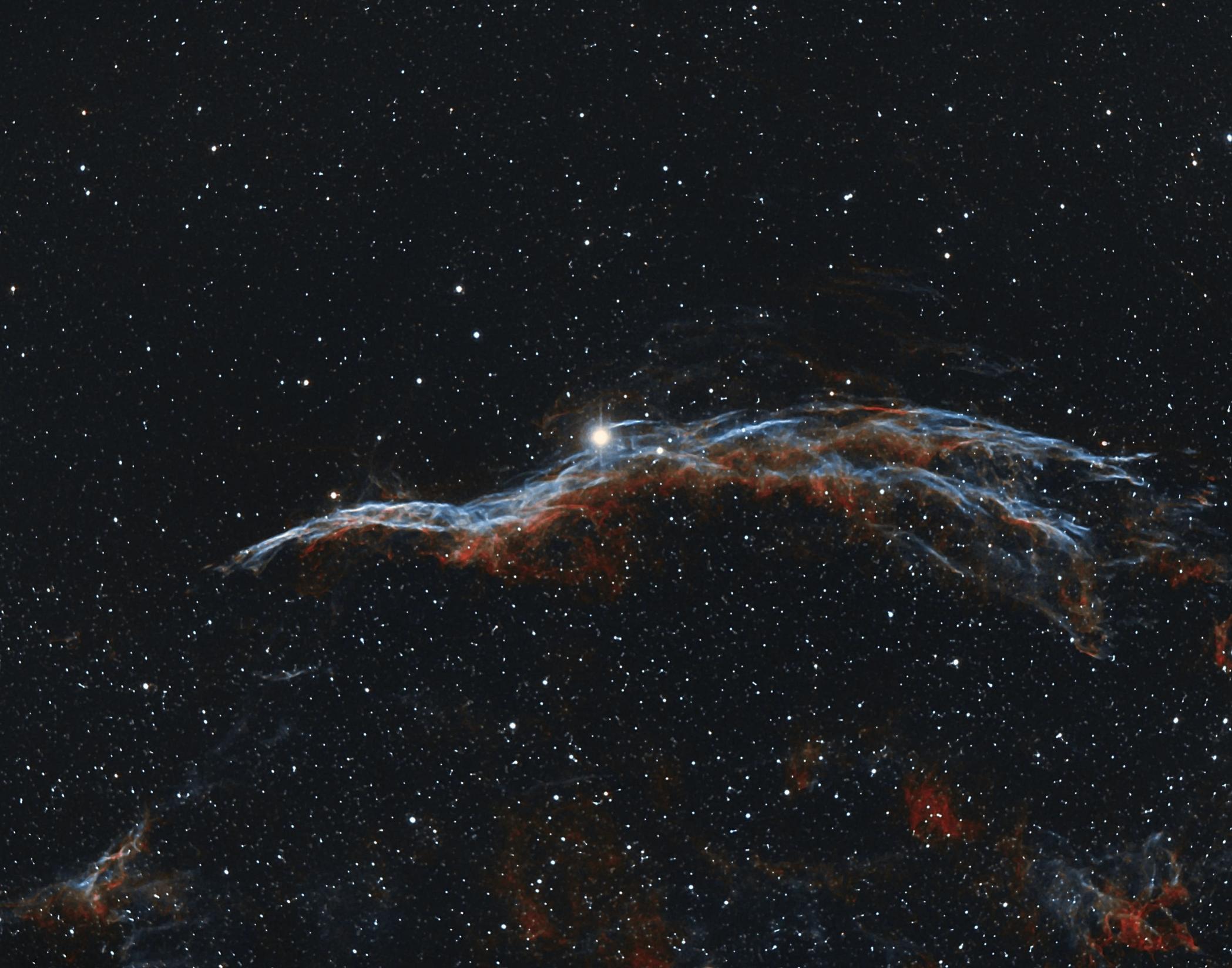Observation by John Hughes: NGC 6960 - Western Veil Nebula
Uploaded by
Observer
John Hughes
Observed
2019 Aug 23 - 20:51
Uploaded
2019 Sep 05 - 09:26
Objects
NGC6992
NGC6995
The Western Veil Nebula (NGC6960)
Planetarium overlay
Constellation
Cygnus
Field centre
RA: 20h45m
Dec: +30°43'
Position angle: -108°00'
Field size
1°26' × 1°08'
Equipment
- William Optics Z103 telescope
- ZWO ASI1600mm Pro Cooled camera
- HEQ6R Pro mount
- Baader 1.25" Ha and OIII filters
Exposure
Gain 200, Offset 50, exposure time 240s per sub frame
Location
North Essex, UK
Target name
NGC 6960
Title
NGC 6960 - Western Veil Nebula
Copyright of all images and other observations submitted to the BAA remains with the owner of the work.
Reproduction of work by third parties is expressly forbidden without the consent of the copyright
holder. By submitting images to this online gallery, you grant the BAA permission to reproduce them in
any
of our publications.


